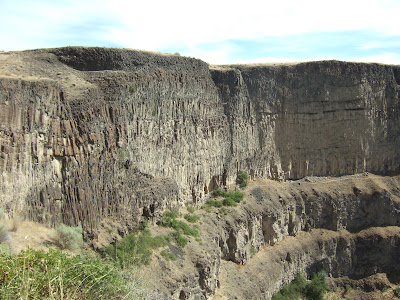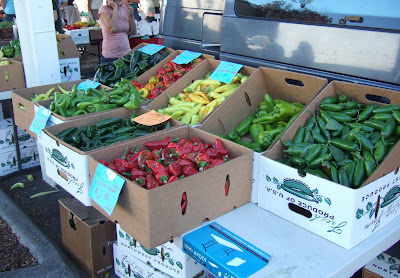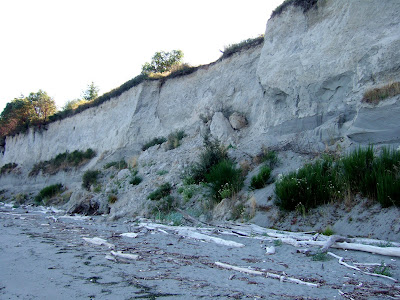I previously did a post on Indian Island in Jefferson County. Marrowstone Island is another Jefferson County island immediately to the east. Marrowstone is accessed via Highway 116 which crosses the south end of Indian Island and crosses no more than a culvert onto Marrowstone Island.
Crossing to Marrowstone Island
Fort Flagler State Park is located on the north end of the island at the old fort and includes old army houses with spectacular views that can be rented. This fort is one of several that were built to prevent a naval invasion of Puget Sound. Any navy be it Spanish or Japanese would have faced a gauntlet of hardened rifled cannons if they tried to enter Puget Sound. Another day use state park is located at the lovely Mytsery Bay on the islands west shore and the State Parks owns a large undeveloped parcel on the southern tip of the island.
Marrowstone is mostly rural large lots with a few pasture farms. Up until a few years ago a common site on the island were signs in favor and signs opposing public water on the island. Being an island in an area with relatively low rain fall combined with unfavorable geologic conditions water availability has limited development on the island such that properties that would otherwise have homes did not because there simply was not adequate water. A couple of years ago public water was extended onto the island so additional homes will be built and existing homes that had water problems again have potable water. The area is still rural and zoning on the island is such that for the most part there will not be huge changes in the short term. I did note recently that the assessed value of a large property on one area of the island had increased dramatically after water became available.
The east side of the island provides a great year round geologic outing for those that find themselves in this part of Washington State. Drive north along the west shore of the island past the hamlet of Norland on Mystery Bay and turn right onto Beach Drive. Follow this road straight across the island to Jefferson County's East Beach Park. From there hike down the beach to the south along the east side of the island to Nodule Point. The hike is from Beach Park to Nodule Point and back is approximately three miles with no hills as it is entirely on the beach.

The first part of the hike provides great exposures of advance glacial outwash capped with glacial drift. The advance outwash consists mostly of sand that was deposited by glacial outwash streams as the glacial ice advanced southward into what is now Puget Sound approximately 20,000 years ago. The glacial drift was deposited directly by the glacial ice as the glacial ice covered the area. The drift consists of an unsorted mix of sand, gravel and silt with an occasional boulder along this reach of shoreline. Because the sediment is derived directly from the ice, the grains have not been sorted by flowing water in sharp contrast to the well sorted underlying sands with a few thin silt layers in the outwash beneath the drift.
Glacial drift over advance outwash
Close up of unsorted glacial drift.
Beside the very good exposures of drift and outwash, this bluff provides excellent examples of shoreline bluff erosion. The first few times I had been on this shoreline most of the sloping lower bluff slopes were grass-overed with a few small Douglas fir trees. Four winters ago a large low pressure system combined with a very high tide and high winds caused extensive erosion along this reach of shoreline. A similar event took place this last winter as well. The erosion caused most of the lower portions of the bluff to become over steep and led to sloughing of the loose sand. This further undermined the very hard compact drift which holds vertical cliff faces and subsequently slabs of drift have calved off of the upper slope onto the slopes and beach below. Various stages of bluff recession can be seen all along the bluff for the first mile of this beach walk.
Recent slab of drift collapsed with a few feet of lost upland property.
One interesting site is a spot where the glacial drift is particularly thick. A chain link fence can be seen from the beach below looking up at the top of the slope. behind this fence is a cemetery. An interesting future problem with a bluff recession I have estimated at 2 inches per year.
Cemetery is just behind fence. Note the sheet of roots exposed after a slab of glacial drift broke away.
A little past the cemetery the outwash unit pinches out and the glacial drift becomes bouldery and a little further on bedrock crops out above the beach level. Glacial drift is often composed predominantly of the local material immediate beneath the ice. So where the drift up to this point on the walk was sandy reflective of the underlying sand it now is boulder filled reflective of the underlying bedrock.
Bouldery basal till
At this point the walk reaches the bedrock exposed at Nodule Point. It is aptly named. The point was originally named Nodule Point by British explorer George Vancouver. The American Wilkes Expedition named it Ariel Point. However, the U.S. Coastal Survey went with the more descriptive name of Nodule Point.
Concretions at Nodule Point
The concretions range up to sizes a bit larger than bowling balls and most are round. The concretions form as a result of different cementation often because of impurities within the sand or siltstone that act as nucleation sites for carbonate to precipitate. Small bits of mud stone surrounded by harder rock are present within this formation. As the rock is eroded, the harder cemented sections stand out as hard knobs from the surrounding softer rock. These concretions are very common in the sandstones in rocks in this area, but this is one of the better sites for observing them. To be clear these geologic features are concretions not nodules. Nodules involve actual replacement of the parent material with new minerals.
Concretions with quarter coin.
Small concretions and vein-like concretions
The formation is primarily sandstone of Eocene age (roughly 45 million years) and was described named the Scow Bay Formation by Allison (1959). Scow Bay is located along the southwest coast of Marrowstone Island. The formation likely overlies the Crescent Formation basalts and was deposited near the end of the Crescent basalt lava flows. Uplift of the formations is the result of accretion of ocean sediments and up lift of the Olympic Mountains approximately 7 to 12 million years ago.
An intriguing feature of the bedrock on Marrowstone Island is that bedrock is found along the shores south of the hamlet Norland, but to the north the depth of bedrock is greater than 1,500 feet with no wells penetrating to the bedrock suggesting a major preglacial structure that happens to align in a parallel manner with faults to the east suggested on Whidbey Island.
It is well worth going a little bit further south past the point. A few hundred feet to the south a 20 foot wide vertical dike of basalt intrudes through the sandstone. The dike is likely associated with a late stage of volcanism associated with the massive out pouring of magma of the Crescent Formation basalt that underlies large tracts of land along the north and east side of the Olympic Peninsula. One of the interesting features of this dike is how the heat from the magma altered and hardened the sandstone on either side of the dike. The harder sandstone along with its concretions juts further out from the land and depending on the tide may require getting wet to get past like I had to the day I did the hike. Which suggests that doing the hike during
low tide is preferable.
Basalt dike with hard altered sandstone on either side.
Chill zone next to basalt dike on the left.
Basalt dike
Altered sandstone with concretions is harder and protrudes out into the water
If you do this walk you may want to continue to the south to Liplip Point where lip shaped concretions are common and on occasion some good birding as well
Earlier Post I have been to Nodule Point on five occasions and have never seen anyone there. A few people will be around the beach near the county park depending on the weather. But even then the beach traffic can be interesting. Lots of deer use the beach as a trail and on this trip I nearly stepped on a seal pup as I was looking at the geology and not where I was walking. It can be also be a great spot for watching ship traffic as this is the passage into Puget Sound.


































































